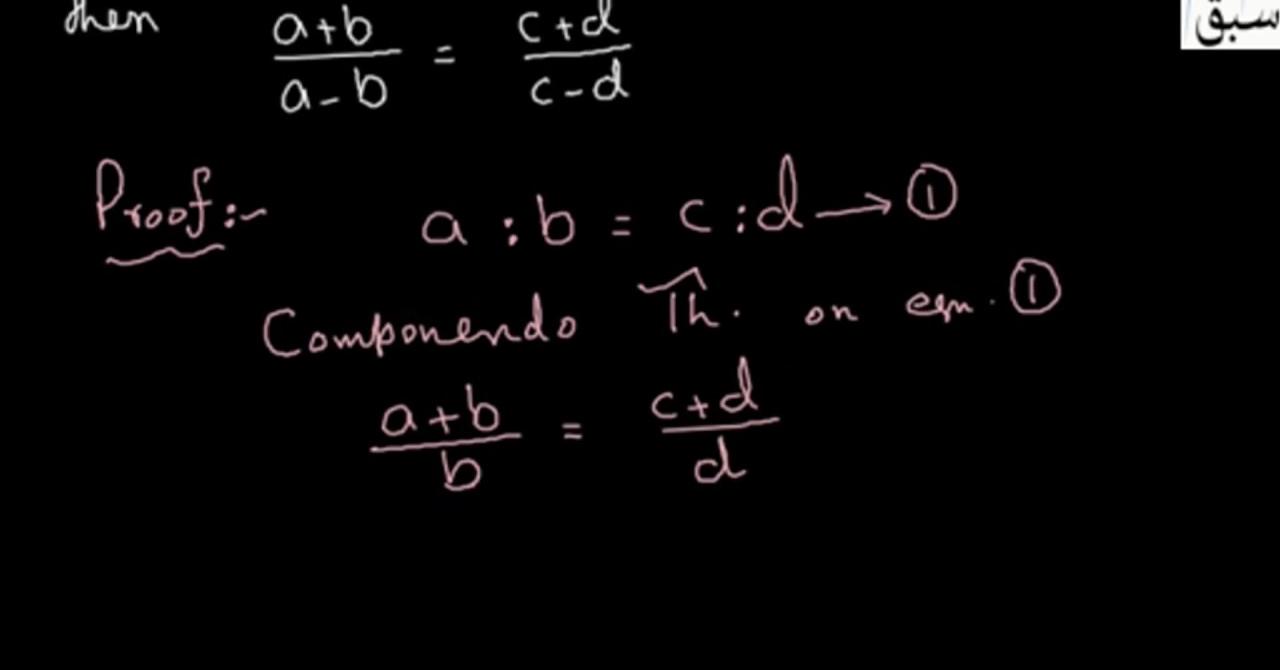Are you curious to know what is componendo and dividendo? You have come to the right place as I am going to tell you everything about componendo and dividendo in a very simple explanation. Without further discussion let’s begin to know what is componendo and dividendo?
In the realm of mathematics, certain concepts and techniques hold a special place for their elegant simplicity and profound applicability. One such concept is “Componendo and Dividendo,” a powerful tool in proportional reasoning that often unveils hidden relationships and clarifies complex equations. In this blog, we’ll dive into the world of Componendo and Dividendo, exploring its meaning, applications, and the magic it brings to mathematical problem-solving.
What Is Componendo And Dividendo?
Componendo and Dividendo is a Latin term that translates to “by composing and dividing.” It is a mathematical principle used to solve equations involving proportions, ratios, and fractions by manipulating the terms of the equation using addition and division. This technique allows us to establish relationships between quantities and reveal insights that might not be immediately obvious.
The Fundamental Principle
The principle of Componendo and Dividendo hinges on a simple yet powerful idea: when two ratios are equal, the sum of the antecedents (the terms before the colon) is to the sum of the consequents (the terms after the colon) as the sum of the whole ratios is to the sum of the ratios subtracted from each other.
Mathematically, if a/b = c/d, then (a+b)/(a-b) = (c+d)/(c-d).
Applications In Proportional Reasoning
Componendo and Dividendo finds applications in a wide range of mathematical scenarios, particularly in problems involving proportions, fractions, and ratios. Some of these applications include:
- Proportional Division: When a total quantity is divided into parts, Componendo and Dividendo can be used to distribute a certain ratio of the parts in a way that maintains the given proportion.
- Solving Equations: This technique can be applied to solve equations where proportions or ratios are involved. By manipulating the terms of the equation using Componendo and Dividendo, you can simplify the equation and solve for the unknown variables.
- Comparing Fractions: Componendo and Dividendo can aid in comparing two fractions, helping you determine which fraction is greater or smaller without having to find a common denominator.
- Similarity and Proportions: In geometry, Componendo and Dividendo can be used to prove the similarity of triangles or other shapes by analyzing their sides or segments.
- Interest and Investments: This principle can be useful in solving problems related to interest rates, investments, and financial transactions involving proportions.
The Magic Of Componendo And Dividendo
The true beauty of Componendo and Dividendo lies in its ability to simplify complex relationships and equations, making problem-solving more intuitive and approachable. By applying this technique, mathematicians and students can uncover connections between quantities and arrive at solutions that might have seemed elusive.
It’s important to note that while Componendo and Dividendo is a valuable tool, it is not a universal solution for all mathematical problems. Its efficacy depends on the specific problem at hand and the relationships between the given quantities.
Conclusion
Componendo and Dividendo is a mathematical gem that shines brightly in the world of proportions and ratios. Its application extends across various mathematical disciplines, from algebra and geometry to finance and real-world problem-solving. By employing this technique, mathematicians and enthusiasts can unravel the intricacies of proportions and unveil the underlying harmony in seemingly complex equations. The power of Componendo and Dividendo lies in its simplicity – a reminder that elegant mathematical concepts can often reveal profound truths and open doors to new insights.
Empower Your Knowledge By Visiting Techyxl
FAQ
What Is The Formula Of Componendo And Dividendo?
Componendo Dividendo Rule Proof
(a + b) : (a – b) = (c + d) : (c – d). So, it can be expressed as a : b = c : d and (a + b ) : (a – b) = (c + d) : (c – d).
What Is The Meaning Of Componendo?
In the concept of componendo, the fundamental rule is if a : b : : c : d then ( a + b ) : b : : ( c + d ) : d . It can be observed that it is required to add the denominator to the numerator in the given ratios and then they are equated.
Where Can We Apply Componendo And Dividendo?
Some of its applications include the solving of equations involving fractions or rational functions, in mathematical Olympiads. According to componendo and dividendo, if a/b = c/d, then (a+b) / (a-b) = (c+d) / (c-d). If a, b, c and d are numbers and b, d are non zero and a/b = c/d then, the following holds: 1.
What Is The Rule For Addendo?
Addendo – If a : b = c : d, then a + c : b + d. Subtrahendo – If a : b = c : d, then a – c : b – d. Dividendo – If a : b = c : d, then a – b : b = c – d : d.
I Have Covered All The Following Queries And Topics In The Above Article
What Is Componendo And Dividendo
What Is Componendo And Dividendo Rule
What Is Componendo And Dividendo Formula
What Is Componendo And Dividendo Rule In Mathematics
What Is Componendo And Dividendo Method
What Is Componendo And Dividendo In Trigonometry
What Is Componendo And Dividendo Rule In Maths
What Is Dividendo And Componendo
What Is Componendo And Dividendo
What is Componendo and Dividendo examples

